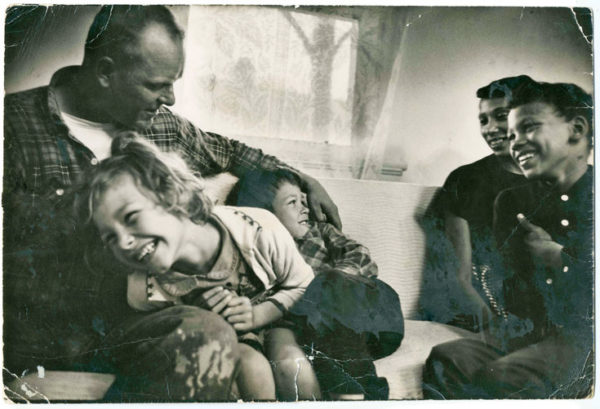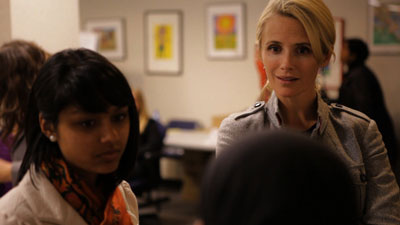WHY TELL THIS STORY?
Though often overlooked among the pantheon of civil rights stories, Mildred and Richard Loving’s quest to live together as husband and wife in the state of Virginia was a pivotal struggle. A white man and a part black, part Cherokee woman were in love and did not understand why their marriage was a criminal offense in the eyes of state. Their effort to make this right – to not live in shame or in exile – is a universal one and reminds us of oppressed and exiled people everywhere. The Lovings were banished from their home for their commitment to each other, and they fought long and hard to return to it, to love each other within the bosom of their family.
It was Mildred Loving who took up their cause, who summoned the will and the courage to fight a hostile system that maintained bans against interracial marriage. She did not set out to be a hero or to change the world. But her need to find a way to live with her husband in their home state of Virginia came at the time of momentous civil rights change. So their quest was made not just for themselves, but for a multitude of others – Mildred’s story became not just her story, but the story of many.
The film investigates the life and legend of Mildred and her husband Richard, little-known heroes of the Civil Rights Era. Though taught in law schools and undergraduate civil rights courses, their story has not had a full documentary treatment, nor has the subject that generated their story – miscegenation in America. Anti-miscegenation has been sensationalized fictionally, starting with the landmark film The Birth of a Nation, but it has never been explored substantively in non-fiction film. This is a surprising omission given miscegenation’s intricate ties to racism.
WHY TELL IT NOW?
There are few Supreme Court rulings that have had the impact that the Loving case had on our culture and politics. In 1967, the year of Loving v. Virginia, 16 states had laws against interracial marriage. Had Barack Obama’s white mother and black father lived in one of those states when they married in 1961, their marriage would have been a felony. Yet the culture of interracial marriage is slow to catch up with legal realities. The 2000 census found only 4.9% of US marriages were interracial.
White Supremacy groups are growing in the US – the very communities that perpetuated and maintained anti-miscegenation laws up to the 1967 Supreme Court ruling. While we’ve elected the first mixed-race President, we also recently witnessed a Louisiana Justice of the Peace refusing to marry a mixed-race couple. Anti-miscegenation sentiments are at the heart of racial segregation and apparently still alive today. The struggle for same-sex marriage has important civil rights parallels. Both address basic human rights.
The Loving Story rouses discussion and debate about interracial marriage and tolerance in the US. It brings together all groups with stakes in marriage equality to seek out commonalties and understanding. It examines the miscegenation crime the Lovings were accused of committing – its roots based in slavery and its lingering, pervasive impact. Freshly revealed,the Loving’s story inspires mixed race couples and their children to share their struggles and claim their unique identities.




